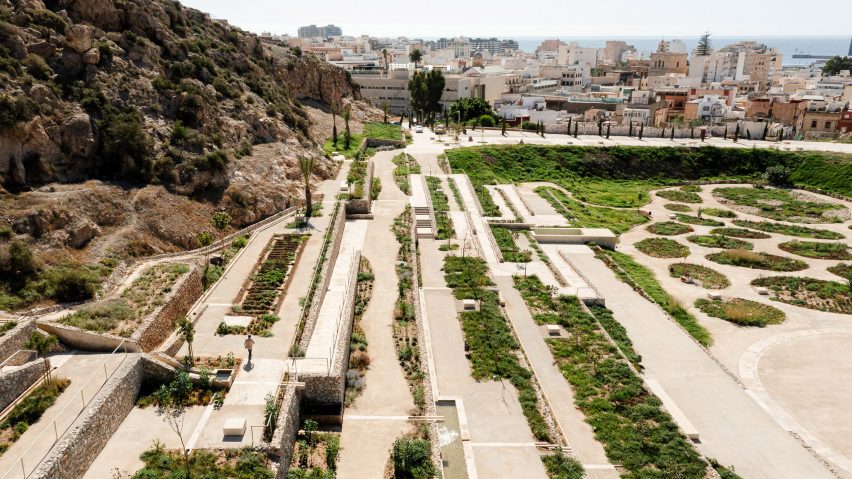
Kauh restores historic Spanish park to be a "palimpsest of its evolution"
Spanish architecture practice Kauh has completed the renovation of La Hoya Park in the historical centre of Almería, restoring a series of stepped, dry stone terraces on the site of a 13th-century town.
Located at the base of a gorge surrounded by Almería's 11th-century Jayrán Wall, Kauh won a 2019 competition to reimagine the historic plot, which had been used for growing grapes before falling into disuse and becoming overgrown.
Stripping away later additions in order to "reclaim" the original space, the Granada-based studio looked to retain as many of the site's historical features as possible, creating a "palimpsest of its evolution."
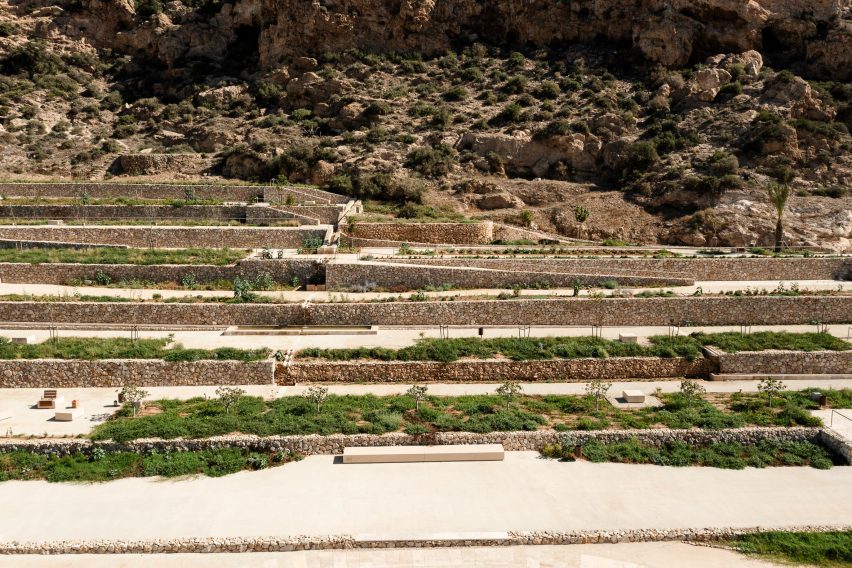
"This place became the forgotten backyard of the city, serving as an uncontrolled dump harbouring irregular activities and as a vacant lot used, from time to time, as the setting for movies," explained the studio.
"The goal was to turn La Hoya into a space shared by agents, a habitat with no other added program than the mere enjoyment of such an exceptional place," it added.
The existing stone walls or "balate" that define the stepped agricultural terraces have been retained and restored, with the addition of new steps, ramps and balustrades to create a variety of accessible routes down from the top of the site.
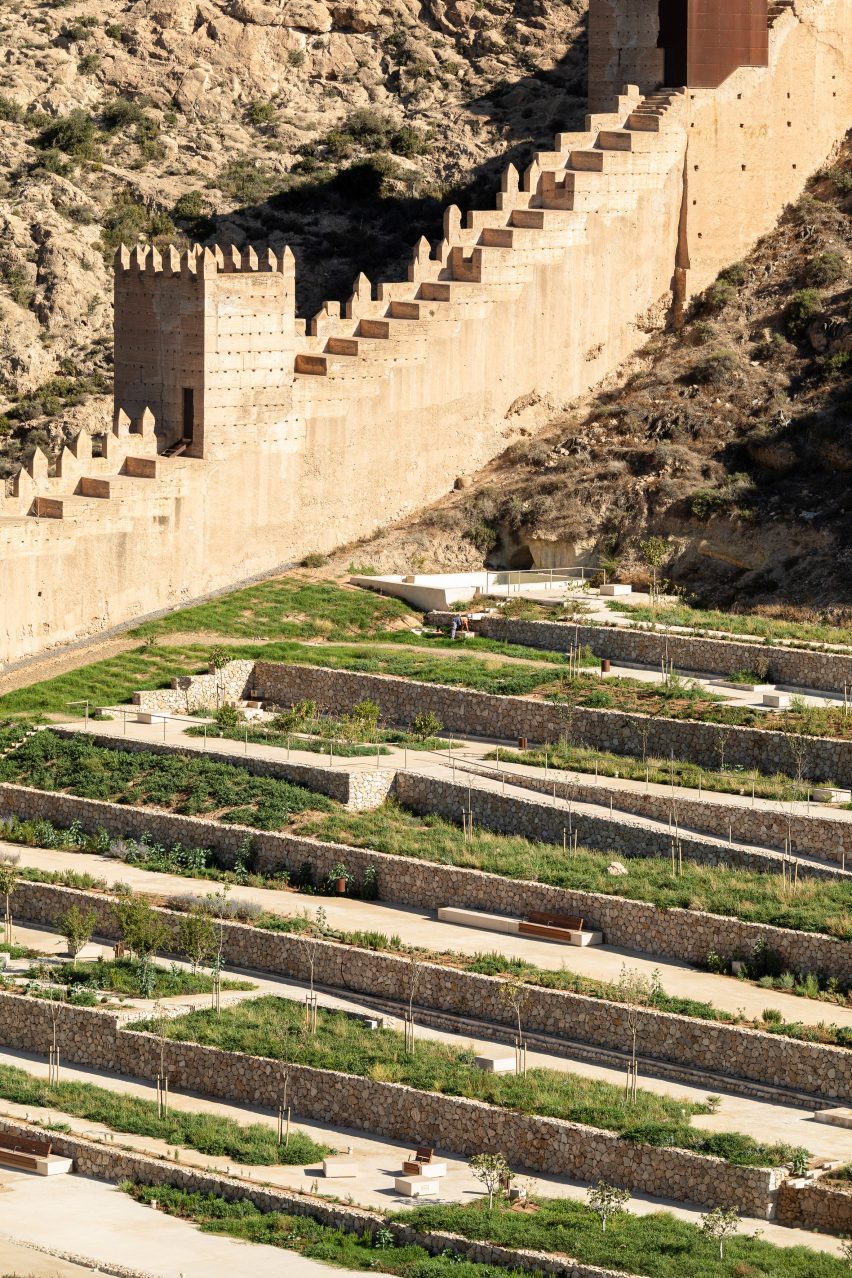
Once home to a neighbourhood in the 13th century, parts of the park are part of an archaeological reserve, and Kauh incorporated any historical materials found during construction into its new design.
Catapult stones from medieval sieges were stacked next to the gate in the Wall of Jayrán, and historic blocks of rammed earth and concrete from previous structures and restoration on the site have been integrated into the park's new planting areas.
"The design was already there; in the hills that embrace this place, the wall that outlines its concave shape, the fortresses that guard it, the valley that widens it, agricultural terraces that geometrize it and the network of channels that irrigates them," explained the studio.
Also restored as part of the project was an irrigation network of water basins and channels that runs down the site, newly finished in smooth, pale concrete to provide a subtle contemporary contrast to the historic stone walls.
For the planting, protected species found on the site were maintained and accompanied by new fruit and mulberry trees.
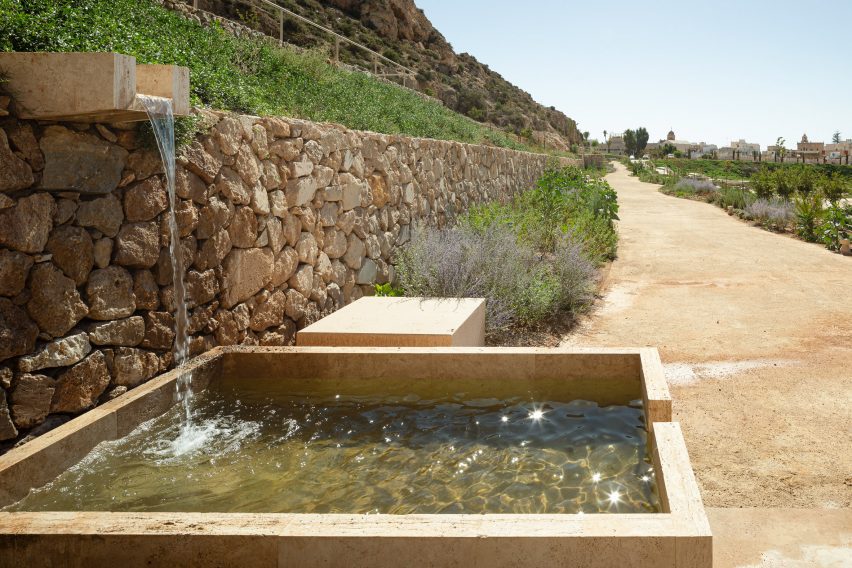
At the base of the stepped terraces, the large, flat expanse at the southern end of the site has been finished with small, curved areas of planting that define winding paths between, dotted with concrete block seating.
"The plant palette comprises trees used traditionally in the agriculture of the area, along with native shrubs and herbaceous plants as well as cosmopolitan species also from the semi-arid Mediterranean spectrum," said the studio.
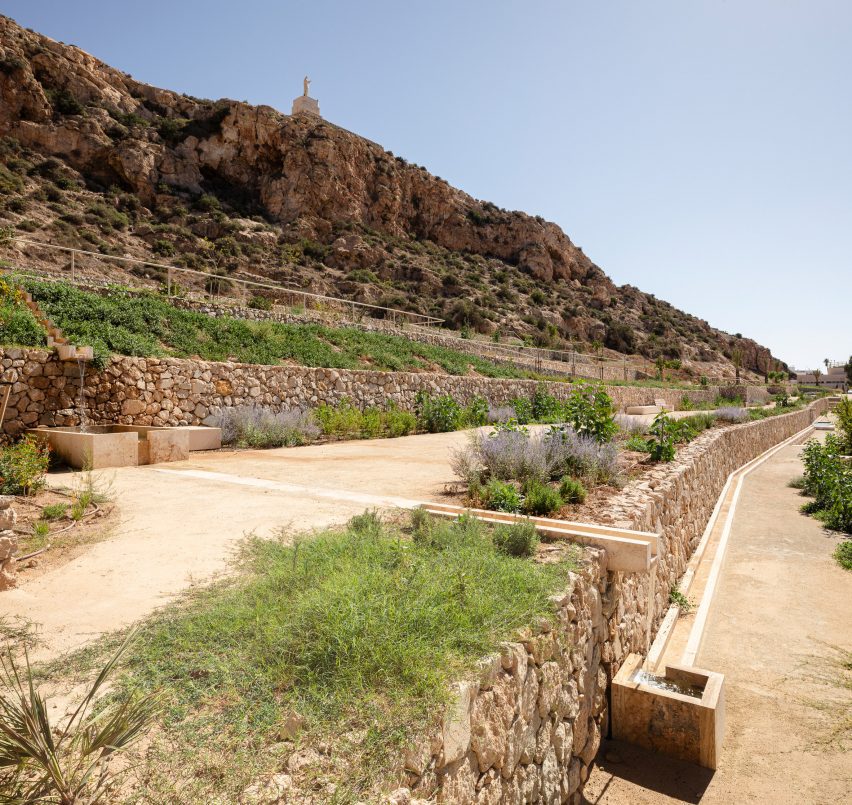
A historic stepped stone vineyard was also the focus of a recent project by Greek practice K-studio, which created a visitor centre for drinks company Metaxa on the island of Samos.
Also in Spain, Madrid's Zooco Estudio created a restaurant within a museum that celebrates its brutalist architecture.
The photography is by Fernando Alda.
Project credits:
Architect: Kauh Arquitectura y Paisajismo (Vincent Morales Garoffolo and Juan Antonio Sánchez Muñoz)
Client: Ayuntamiento de Almería
Contractor: UTE Jarquil (Grupo Copsa)